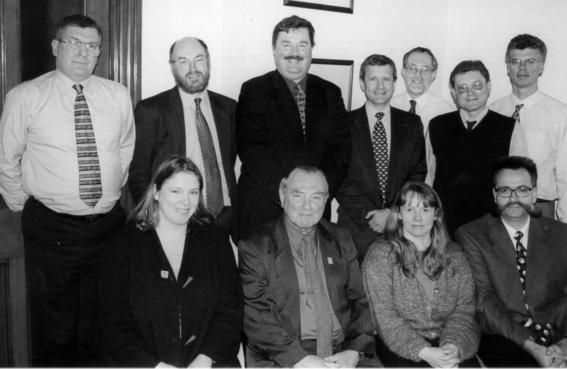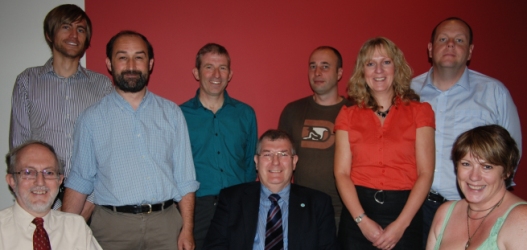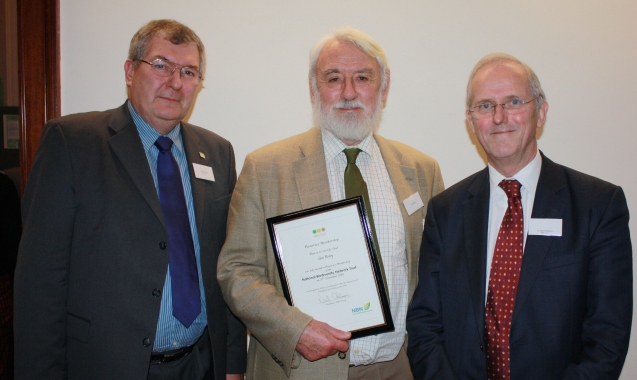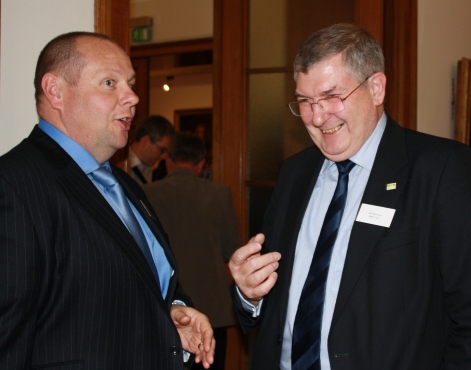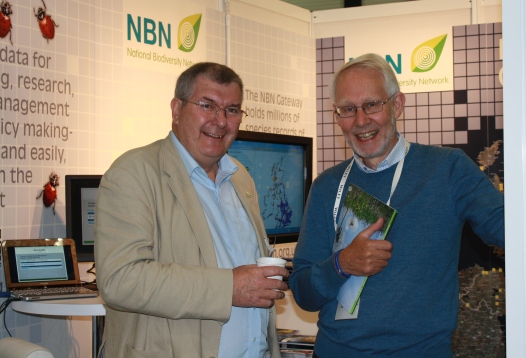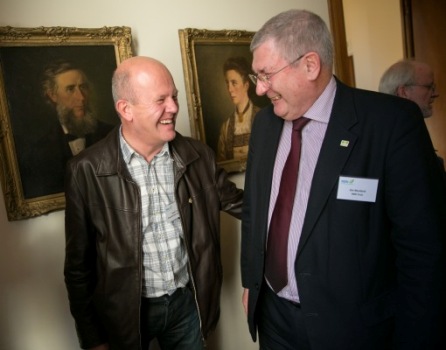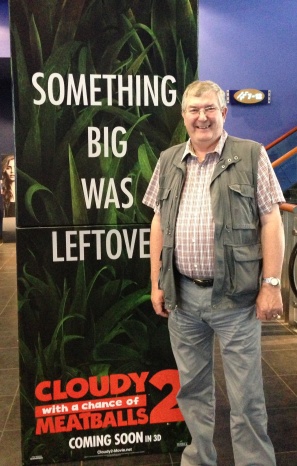On his final day as the Chief Executive of the NBN Trust, Dr Jim Munford shares his thoughts on the NBN and his hopes for its future.
You’ve been with the NBN Trust from the start. What are the most significant things that have happened in those 15 years?
I would have to start by saying that I came to the NBN with little appreciation of the sheer volume of high quality data that volunteer recorders across the UK have generated over the years. In my defence, remember that I am a marine biologist. That is not to say that my knowledge of terrestrial natural history is basic or abysmal, just that my professional interests had hitherto been of a rather more salty water variety. It has been a pleasure to work with botanists, birders, entomologists, herpetologists, even the occasional arachnophile (crustacea good, insects OK, arachnids not so good), all with a passion for their chosen taxa; they have been free with their knowledge and I have learnt so much.
The idea of sharing the data arising from biological recording goes back some time and is best summarised in the report from the Co-ordinating Commission for Biological Recording published in 1995. As an organisation, the National Federation for Biological Recording played an important role in carrying the flag for data sharing, but we can easily identify individuals who led by example. The NBN Trust has recognised some of the champions of the early evolution of the NBN through the award of honorary membership of the Trust; I think of Sam Berry, Paul Harding, Charlie Copp, Trevor James and others, but I would have to say that I remember Sir John Burnett, the first chairman of the Trust, with particular warmth. The groundbreaking work that they undertook cannot be underestimated, their enthusiasm for biological recording and data sharing sustained interest in the concept of a network linking data providers with users, even when in a technical sense it would have been difficult to bring about. What made the difference was the work undertaken by the technical team led by Steve Wilkinson that gave us the mechanism for data exchange and sharing – the NBN Gateway. We can now choose, if we so wish, to link biodiversity records from any source to any user; it is a technical reality. It is a technical reality that is underpinned by another great achievement – the UK species inventory; a simple idea but a huge amount of painstaking work. We owe a lot to Charles Hussey, John Tweddle and Chris Raper at the Natural History Museum.
We now live in a world where access to data, and apps which use those data, is seen as entirely normal and commonplace. Just think how easy it is for you to access your bank account, train times, news reports, weather reports, do your shopping etc. 15 years ago this was ground breaking stuff. I joined the NBN less than a year after Google was founded! Real time mapped internet data has an even more recent history; Google Maps entered the market less than 10 years ago! The NBN Gateway is truly ground breaking and I am proud to be associated with it. I remember a conversation with Steve about a technical difficulty we were having with the then incarnation of the Gateway, which used Esri’s ArcInfo technology. The decision was taken to ask Esri for help – their response was that we had already driven their technology way beyond what their technical people had thought possible! And so it goes on. Like it or loathe it, the NBN Gateway is quite literally leading edge, or as Paul Gilbertson (present technical lead) calls it ‘bleeding edge’ technology. We may still argue about how it should be used, but it is a world beater. The team has changed over time but Jon Cooper is still there; others have moved on… but the coding remembers their trace; Richard Ostler, Andy Brewer, many names that are known to few, but have contributed beyond measure.
The National Biodiversity Network has been instrumental in delivering biodiversity data to the desktops of public agency staff, through web services the data are used in many inventive ways. The profile of the NBN as a whole and its component parts has never been higher. It is impossible to overestimate what this means. The data from the NBN has moved from being a ‘nice to have’ to ‘business critical’, the NBN features in any government report which refers to biodiversity data.
When you were appointed as the Programme Director (your job title at the time), of what was really an unknown entity, did you ever imagine that there would be almost 100 million species records being shared through the NBN Gateway?
One of the first presentations I gave on the NBN Gateway used 1.6 million records from, as I recall, about 5 different taxa. People were astounded that it was possible to see the outline of the UK from the data points; that so much data existed. Sometime later Trevor James and I gave a presentation to the staff at Rothamsted. At the end of the presentation we asked the audience to call out species names and, using the power of the Gateway, we showed them distribution maps. I began to notice a few open mouths – we were doing in seconds what it would have taken weeks of trawling in a library to achieve.
The data from many taxa are still ‘sparse’ and patchy. It is unfortunate that this sparseness is associated with some taxa which I think will be vital if we are to manage our ecosystems during climate driven change, if we are to successfully implement the Lawton report, if we are to implement natural capital accounting, if we are to apply offsetting properly, if we are to manage invasive species.
Did I ever imagine we would be near 100 million records – no. After all the CCBR only uncovered 60 million records and that was the best information we had at the time! Are we near the limit – no. Is the balance across the taxa right – again no, and this will be a problem for the future.
What do you think have been your biggest achievements as CEO of the NBN Trust?
I guess still being here at the point of my retirement! I came from Scottish Natural Heritage on a two year assignment and I am still here 15 years later, which must say something. I remember once meeting someone, I think from the Woodland Trust, at a Natural England event in York. He wanted to meet the man who had been given the poisoned chalice – no one thought the NBN had ‘legs’. He was quite open in saying that no one thought it would last and that the ship would sink with me on it – pardon the maritime allusion. Well it didn’t, the NBN still exists and data are still being shared across the network and beyond.
At times I feel a bit of a fraud. I have already mentioned the enthusiasm of the many recorders I have met, and I have mentioned the technical excellence of the Gateway development team, but I have been surrounded by excellence and enthusiasm. It is easy to be the CEO of a team of enthusiastic experts. I think I have had my moments; there are things that have happened that I take particular pride in because I have felt rightly or wrongly that they have been ‘my’ contribution. However, I will leave that for others to judge. I know I have had access to some good advice whether from the three chairmen I have worked with, the two treasurers, the many Board members I have known, my staff and the staff of many other organisations who are part of the NBN, or who work closely with us. I thank you all for helping me and hope you will extend the same assistance to my successor.
What has brought you the greatest sense of satisfaction?
The key role of the NBN Trust is to act as champion for the network. This is not the great lauded type of achievement, but rather the day to day diligence, enthusiasm and professionalism that together makes an organisation work. I would like to think that I leave a team at the Trust which shows these qualities and without whom the Trust and the NBN would not exist. The team who answer the phone, arrange and attend meetings, deliver training, load the data, develop new ways of using the NBN, bring new members on board, help them understand how the NBN works and how best to benefit from being members – in a word communicate. The Trust was never intended to be a big organisation, most of the investment in building and sustaining the NBN comes from our members. In fact the Trust was originally the Board and me! I have been supported by an excellent team, we have been fortunate that as one member of the team moves on they have been replaced with someone of equal skill and enthusiasm. The whole team works as one, we know each other’s skills, and we know we can rely on each other to get the job done. That is why the NBN still exists – the data were good and needed, the basic concept was right, the technology was available, but the team that made it happen should take a large slice of the credit. I take satisfaction in that I helped shape that team; recruited the right people. I am satisfied that I pass on to my successor a team that knows it business – that works and delivers.
Are there any regrets that you have from your time at the Trust?
At the outset I predicted that we could tackle the technical issues within two to three years. The cultural changes necessary for the NBN to be a success I guessed would take 15 years. We are now 15 years down the track and on the fifth generation of the Gateway, so I guess I was about right on the technical front. Some have made the cultural changes and moved towards a greater openness with data, but far from all. I overestimated the willingness to move toward full openness. That is not to say that we have not come a long way. I also have a deeper appreciation of the barriers to full openness. I think some of them are over stated, but they are clearly heartfelt. We have not seen the NBN being used by the data contributors as much as I had hoped; I think there is much to be learned from combining data from different taxa. I accept that perhaps this is happening, but through other pathways; the NBN Gateway is being by-passed and the older routes are still seen as more ‘secure’. I wish this was otherwise. It would be no surprise to say that the powerhouse of the NBN’s evolution has been the needs of the public sector; this needs to change, to be broadened. We must invest more in working with recorders and their societies, invest more in the research sector and others to better understand their needs and ensure that we meet them.
The focus has been on the new; the Gateway, the UK Species Inventory, and this is to be expected. We need to also ensure that the older, but vital elements of the NBN; the local record centres, the national schemes and societies, the volunteer recorders themselves, also benefit from this ‘main streaming’ of biological records that I have already referred to. It is difficult to evolve and grasp the full potential of new technology, new ways of working, it takes time.
I am sure you will be watching the further development of the NBN closely over the next few years. What will you be hoping to see?
More integration, more openness, grasping the new challenges, more sustainability within the overall business model if that makes sense.
What will you miss most?
The companionship, the enthusiasm, the sheer excellence – the craic as the Scots say.
How will you fill your time after the NBN?!
Should I say recording? I do use iRecord – what a wonderful system, just look up ‘Jim’s Garden’. The real answer is I don’t know. Perhaps I will write a book about the NBN and all the people it has been my privilege and pleasure to have met and worked with. Thank you all.
Here are a few photographs of Jim taken during his time with the NBN
